Posts Tagged ‘river’
{{start}}
{{end}}
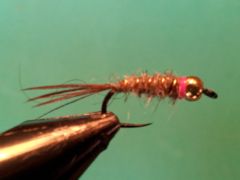
{{+1}}TBH collared hare and copper{{-1}}
{{start}}
A very effective fly yet perhaps the simplest of bead heads to tie. With elements of the hare and copper and an Adams fly in the dressing its logical that its default name became "hare and adams".{{end}}
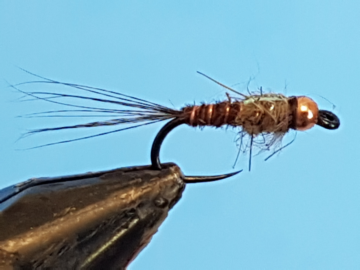
{{+1}}TBH flash back PTN{{-1}}
{{start}}
Jeremy Lucas was our river coach leading up to the 2012 World Fly Fishing Championships and was very keen on thinner flies for this early season competition. I think its a great interpretation of a classic fly and commend it for your consideration.{{end}}
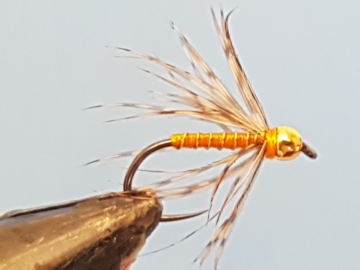
{{+1}}Tungsten bead head orange and partridge spider{{-1}}
{{start}}
I nearly always fish my bead head spiders on the point in a team of two flies and with a relatively heavily weighted nymph such as a TBH duracell jig nymph, TBH collared hare and copper or TBH chocolate caddis nymph on the top dropper on the dropper 60 or 70 centimetres up the leader.{{end}}
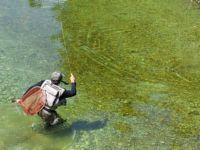
{{+1}}River fly fishing set ups for competitions – the “best of the best”{{-1}}
{{start}}
As I continue through my fly fishing journey it's not surprising that as my skill level has evolved and I have experimented with different river fly fishing set ups and systems that the techniques that I regard as the "best of the best" have changed.{{end}}
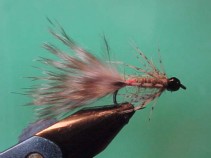
{{+1}}TBH hot butt caddis bugger{{-1}}
{{start}}
If your fishing in water with reasonably numbers of caddis your going to want to give this 3 cm bugger a swim. Caddis represent up to 70% of a trout's diet and whilst this fly is bigger than any caddis nymph I have seen trout love it. It is also a must tie on fly for discoloured water. You can fish it as a nymph but my preference is to fish it across, down and on the swing.{{end}}
{{+1}}Spring into action – 2011 in the Snowys{{-1}}
{{start}}
Well the river season has opened with a blast and there have been great reports in relation to most of our local rivers and lakes. For the rivers - I have spent quite lot of time fishing the Eucumbene River either side of Providence Portal. On the lakes it has been fantastic with plenty of double figure days. this year has been the best polaroiding season we have seen for years. The 'doom sayers' predicted that the flushing of the Snowy River with water from Lake Jindabyne would kill the fishing off for a few months. They were so wrong ...{{end}}
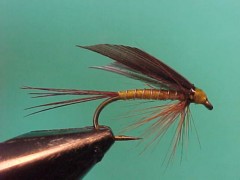
{{+1}}Greenwells glory (wet){{-1}}
{{start}}
This "must have" pattern was first tied by James Wright in 1854 for Cannon William Greenwell as a river wet fly. Over time it has been translated into a nymph and of course into a dry fly which is a must have fly when olives are around. The tie below is a modern version of the original wet.{{end}}

{{+1}}Claret hopper{{-1}}
{{start}}
A popular fly in the United Kingdom this fly is equally at home early and late in the season in Australia. We don't have any burgundy coloured hoppers that I am aware of but this buggy looking fly often works when the first and last of the seasons terrestrials are around. Whilst not a strong floater this fly ticks all the boxes for those that want an enticing fly that will sit in the surface film.{{end}}

{{+1}}Tea tree beetle – variant 2{{-1}}
{{start}}
Both floating and wet beetles (including drowned terrestrials beetles and aquatic beetles) should be fished in the current with as little line drag as possible or with a very short twitching action. A nondescript well tied beetle pattern if presented in the right way when fish have beetles on their menu, more often than not, will be accepted by fish.{{end}}

{{+1}}Tea tree beetle – variant 1{{-1}}
{{start}}
One species that is a popular food source for trout is the tea tree beetle. This representation is tied in shades of black and brown colours that have stood the test of time. Many of the recipes you see use brown raffia as the wing case. I don't like raffia as a fly tying material and have substituted a hackle from the back of the ring neck pheasant. Its a similar colour to many of the recipes that have come before mine but its much more durable than the raffia.{{end}}













